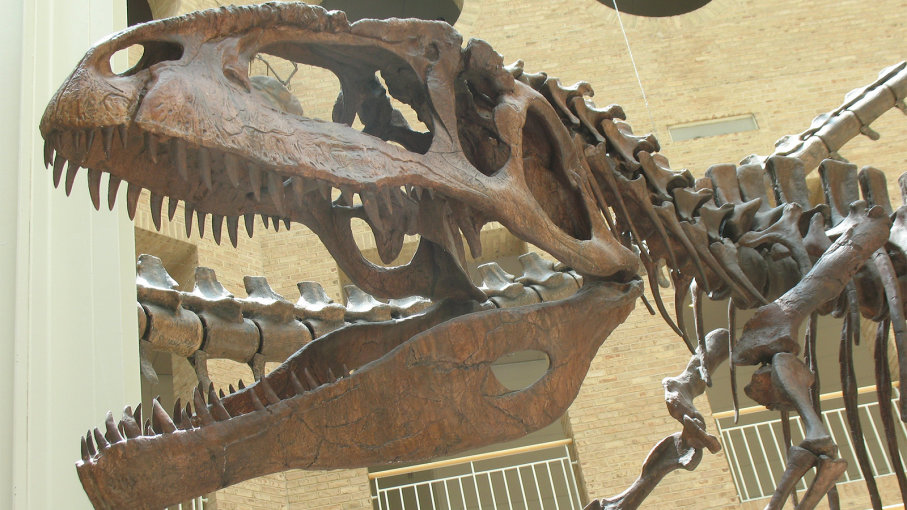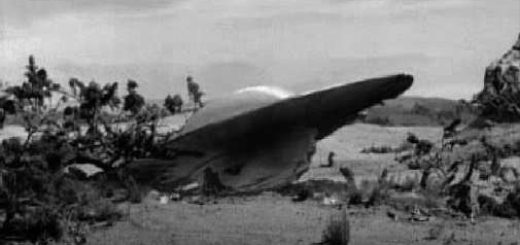Giganotosaurus Was One of the Largest Carnivorous Dinosaurs That Ever Lived

They lived about 30 million years apart and never set foot on the same continent. Yet Giganotosaurus carolinii is always getting compared to the world’s most popular dinosaur, the beloved and well-known Tyrannosaurus rex.
Tyrannosaurus rex has been a media darling since (arguably) 1906, when The New York Times called it “the prize fighter of antiquity.” Named just one year prior, this big beast was already making a splash over at the American Museum of Natural History in Manhattan.
Today we know an adult T. rex could stand 12 feet (or 3.6 meters) tall at the hip and measure 40 feet (12 meters) long. As such, Tyrannosaurus was one of the largest predators to ever walk the earth.
But hold your horses. A handful of other meat-eating dinos rivaled, or possibly exceeded, the creature in size. Giganotosaurus belongs to this elite group — and it’s part of a dinosaurian mystery that’s never been solved.
Beasts of the Southern Wild
T. rex and Giganotosaurus were both representatives of the theropoda cladeT. rex and Giganotosaurus were both representatives of the theropoda clade. (A “clade” is a group of organisms which includes a common ancestor species and all of its presumed descendents.) Hollow-boned and bipedal, the theropods were (and are) a highly successful bunch. On the list of documented theropods, you’ll find every carnivorous dinosaur yet discovered, quite a few plant-gobbling species and all birds, living and extinct.
The last nonavian dinos were wiped out at the close of the Cretaceous period, an expanse of geologic time that lasted from 145 to 66 million years ago. Its conclusion marked the end of the Mesozoic Era, sometimes called “The Age of Dinosaurs.”
Tyrannosaurus rex lived in North America during the twilight of the Cretaceous, making its evolutionary debut around 68 million years before the present. Our buddy Giganotosaurus was the product of another time — and a different landmass.
Giganatosaurus
A reconstructed Giganotosaurus carolinii skeleton on display at The Australian Museum in Sydney, Australia.
LISA MAREE WILLIAMS/GETTY IMAGES
Native to western Argentina, it came along much earlier in the Cretaceous, roughly 98 to 97 million years ago. South America was a realm of giants back then. Huge sauropods, or “long-necked dinosaurs,” roamed the countryside, with some species — like Andesaurus and Limayasaurus — stretching around 50 feet (15 meters) long. Rounding out the local bestiary were crocodylians, early snakes and beaked herbivores.
No doubt Giganotosaurus kept its neighbors on guard. The theropod’s discovery was first announced in 1995 by paleontologists Rodolfo A. Coria and Leonardo Salgado. In all the years since, we have yet to find a complete skeleton. However, the backbones and tail vertebrae at our disposal suggest Giganotosaurus was at least 41 feet (12.5 meters) in length.
So Giganotosaurus might’ve been slightly longer than Tyrannosaurus. Cool beans.
On the other hand, a 2014 paper published in the journal Plos Biology, argued T. rex had a much heavier build. Using the circumference of its upper leg bone, Roger Benson and his colleagues calculated that a mature Giganotosaurus weighed about 13,448 pounds (6,100 kilograms). The same technique put T. rex at a whopping 16,975 pounds (7,700 kilograms).
Shark-like Teeth Sliced Ribbons of Flesh off Prey
Weight gaps are all well and good, but the jaws tell better stories. Anatomical evidence suggests these two carnivores used very different methods to bring down their prey.
Thick and banana-shaped, the teeth of Tyrannosaurus would’ve excelled at crushing bone. In contrast, Giganotosaurus had tall, skinny teeth which looked an awful lot like recurved kitchen knives. Serrated on both sides, the pearly whites were housed inside a narrow snout. (By the way, Giganotosaurus had a monstrous skull; scientists estimate the noggin was around 6 feet — or 2 meters — long.)
Giganotosaurus
A 7.5-inch resin cast from a Giganotosaurus dinosaur tooth.
INDEPENDENT PICTURE SERVICE/UNIVERSAL IMAGES GROUP VIA GETTY
Combine these features and you’re looking at a theropod that probably killed by slicing ribbons of meat off its unfortunate prey — as opposed to shattering bones. Once bitten, a victim may have bled out while the carnivore lurked nearby.
Giganotosaurus hails from one of the fossil record’s most intimidating families: the carcharodontosaurids.
If you’re into sharks, that name should ring a bell; scientists call the great white Carcharodon carcharias. Likewise, the word “carcharodontosaurid” roughly means “shark-toothed lizard” in Greek.
Steve Brusatte is a paleontologist at the University of Edinburgh who’s studied these remarkable theropods — and happens to be a scientific adviser for the next “Jurassic World” movie.
“The roster of carcharodontosaurid fossils has expanded tremendously over the last decade as people have found new fossils all over the world, particularly in South America and Africa, but also in Asia and Europe,” says Brusatte in an email. “Most carcharodontosaurids [like Giganotosaurus] were giant meat-eating dinosaurs with deep jaws and sharp, thin, almost shark-like teeth. They were the largest and most formidable predators in many ecosystems during the early to middle part of the Cretaceous, before the rise of tyrannosaurs.”
Indeed, T. rex had some puny forebears. The first members of its lineage were human-sized predators that showed up around 170 million years ago. Giant tyrannosaurs wouldn’t start evolving until the late Cretaceous Period, after the mighty carcharodontosaurids died out.
“This changeover remains a mystery,” explains Brusatte. “We don’t really know why it happened, and it is one of the biggest remaining mysteries of dinosaur evolution, in my opinion.”



 Creators of mankind
Creators of mankind Description of “Tall white aliens”
Description of “Tall white aliens” Where they came from?
Where they came from? About hostile civilizations
About hostile civilizations The war for the Earth
The war for the Earth “Tall white aliens” about eternal life
“Tall white aliens” about eternal life Video: “Nordic aliens”
Video: “Nordic aliens” Aliens
Aliens Alien encounters
Alien encounters The aliens base
The aliens base UFO
UFO Technology UFO
Technology UFO Underground civilization
Underground civilization Ancient alien artifacts
Ancient alien artifacts Military and UFO
Military and UFO Mysteries and hypotheses
Mysteries and hypotheses Scientific facts
Scientific facts


















